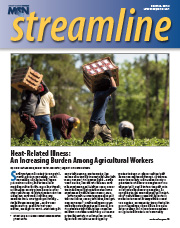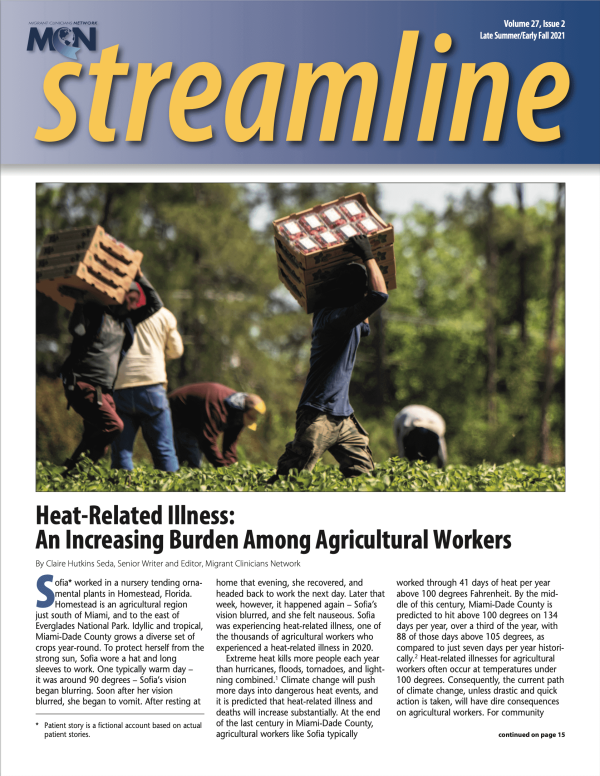
In 2017, Minnesota public health authorities were alarmed by an uptick in pediatric cases of the measles, which appeared to be the start of a second outbreak in a decade. Almost 20 years prior, the highly contagious disease had been declared eliminated in the United States because of an effective vaccine coupled with strong childhood vaccination programs. However, by 2008, misinformation and disinformation campaigns had begun to sow distrust among many communities across the country, leading to declining vaccination rates. In Hennepin County, the most populous county in Minnesota and home to a large Somali-American community, vaccination rates for US-born Somali two-year-olds had been above 90% until 2004, when they began to slide.1 By 2011, just 54% of two-year-olds had received the measles-mumps-rubella (MMR) vaccine. That is when the region experienced its first outbreak, when a young child contracted measles abroad, and spread the infection on return to Minnesota. By 2017, the MMR vaccine rate among two-year-olds had increased to 73%.2 Despite the increase, a second outbreak began. This time, however, the health community had learned its lessons.
Hinda Omar is a Health Educator Specialist with the Minnesota Department of Health, in a team specifically working on vaccine-preventable disease education and partnerships. She joined in 2014, and had already worked closely with the Somali community for three years before the second outbreak began. “We were more prepared, because the data we had showed a low rate of children who were vaccinated with the MMR vaccine from ages two to three, and we created an outreach program to educate and inform people about vaccines,” Omar explained. They discovered that parents were worried about an incorrect correlation between the MMR vaccine and autism, and they also had religious concerns. Omar reached out to faith leaders to begin dialogue around vaccines, and to reassure parents. Her team also went to community centers and elsewhere to give information in person, to address misinformation about the vaccine.
“[Parents] won’t believe the message we send through paper or email. Being there in person built the trust we needed to stop the outbreak before it got out of hand,” Omar said. They also educated childcare staff and school administrators, provided daily updates to the community, and leaned on community partnerships to inform the community and ensure that misinformation was countered by facts. “Collaborating with the Minnesota Minority Childcare Association really helped spread the message to all the childcare [facilities],” Omar noted as an example. As a result, the 2017 outbreak was small. By late June, 70 cases had been reported. “Were it not for an effective state and local public health response, that number could have easily been in the hundreds,” noted a Centers for Disease Control and Prevention (CDC) article on the outbreak. The study concluded that the health department’s reliance on cultural liaisons to do home visits, matched with engagement with local media, resulted in effective dialogue with the local Somali community to dispel vaccine myths and provide measles antibody injections to curtail the spread of the measles.3 While current figures of vaccination are unavailable, the efforts of the group have yielded positive results in the quick end to the 2017 outbreak and the lack of any outbreak since. Nationally, the vaccination rate for two-year-olds who have received at least one MMR dose is 90.8%.4
Sowing Distrust Isn’t the Same as Believing in Misinformation
Highly educated and less educated parents alike were declining the MMR vaccine. Many had heard from other community members that the vaccine caused autism. Autistic spectrum disorder, some community members reported, was so rare in Somalia that a word did not exist for the health condition. By 2017, a large “anti-vax” community – those who rejected vaccines out of concern for health consequences – was connected across the US through social media and word-of-mouth, and was still touting Andrew Wakefield’s 1998 article in the Lancet, which linked the MMR vaccine to autism, despite the article’s retraction in 2010 because of falsification of data.56 Many studies following the 1998 article were unable to find a link between the MMR vaccine and autism, which confirmed the vaccine’s safety.7 Yet, doubt around the safety of the vaccine from the article continued to be sown. “Being told that MMR does not cause autism was not satisfactory for many parents because no one could tell them what does cause autism,” noted Lynn Bahta, RN, MPH, CPH, a public health nurse from the Minnesota Department of Health, in an article co-written with Asli Ashkir on vaccine resistance.8
Addressing such resistance requires sustained, culturally relevant face-to-face health education, such as what Omar and her team provided. Empathy and connection are key: “I know how to talk to the Somali community and others,” she emphasized. “Being a parent myself, I knew the fear they had… so it was easy for me to calm them down.”
Not all who encounter misinformation will initially believe it. An April 2021 study found that “individuals who were more susceptible to health misinformation had less education and health literacy, less health care trust, and more positive attitudes toward alternative medicine.”9 Community health workers and outreach workers like Omar work to improve health literacy and increase trust in the local health care community, two critical factors to reduce susceptibility. Her work also creates linkages to trusted sources of health information, to enable community members to engage with the health community when they encounter new health messages that may be false.
Clinical Authority and Equitable and Empowering Action
During Migrant Clinicians Network’s virtual learning session on COVID-19 vaccines and refugee, migrant, and immigrant health, Bahta reflected that clinicians have a responsibility to push for these community linkages, even if clinicians have performance expectations that are driven by the health system rather than what is effective within a community. This may result in a lack of outreach efforts or less emphasis on Community Health Worker programs. Bahta believes those with clinical authority, particularly clinicians in authority who are not racial or ethnic minorities, are uniquely positioned to use that authority to advocate for and create policies and processes that build health equity.
“Always be asking, how is this information getting to people who don’t have immediate access to information? How is this service getting to people who might not know that the service exists?” she questioned. “We have to make every effort for equitable action in what we do.”
This in part includes stepping back to allow leadership and decision making by those in public health with greater understanding and integration into the communities being served – including Community Health Workers and outreach workers who are members of the communities themselves, she said.
She added that taking account of past treatment is important. “Some of the historical and current racial injustices that [communities of color] have experienced make them very suspicious of government entities,” Bahta noted. A first step is to acknowledge past injustices, she says.
“Those acknowledgements to our communities are a very important part… to starting a dialogue. The dialogue allows people to expunge their concerns and frustrations with the systems and, by acknowledging that, it allows them to know they have been heard,” she continued, which in turn may allow patients into a space where they may be able to receive information from the clinician without or with lessened distrust.
Access MCN’s virtual training on misinformation along with resources: https://bit.ly/33Zzyhi
Watch MCN’s virtual training on COVID-19 vaccines and refugees, migrants, and immigrants: https://bit.ly/3f18QeD
See our upcoming virtual trainings: https://www.migrantclinician.org/trainings.html
References:
1 Bahta L and A Ashkir. Addressing MMR Vaccine Resistance in Minnesota’s Somali Community. Minnesota Medicine. October 2015. Available at: http://pubs.royle.com/display_article.php?id=2280397
2 Fact Sheet: Childhood immunizations. Hennepin County Public Health Assessment Team. Accessed 5 August 2021. Available at: https://www.hennepin.us/-/media/hennepinus/your-government/research-data/public-health-data/childhood-immunizations-2017.pdf.
3 State and Local Readiness. Centers for Disease Control and Prevention. Available at: https://www.cdc.gov/cpr/readiness/stories/mn.htm
4 Immunization. National Center for Health Statistics, Centers for Disease Control and Prevention. Accessed 23 August 2021. Available at: https://www.cdc.gov/nchs/fastats/immunize.htm
5 Howard J. Minnesota measles outbreak exceeds last year’s nationwide numbers. CNN Health. 2 June 2017. Available at: https://www.cnn.com/2017/06/02/health/minnesota-measles-outbreak-bn/index.html
6 Retraction—Ileal-lymphoid-nodular hyperplasia, non-specific colitis, and pervasive developmental disorder in children. The Lancet. 6 February 2010. DOI: https://doi.org/10.1016/S0140-6736(10)60175-4
7 Wakefield’s article linking MMR vaccine and autism was fraudulent. BMJ. 6 January 2011. 2011; 342 doi: https://doi.org/10.1136/bmj.c7452 (Published 06 January 2011)
8 Bahta L and A Ashkir. Addressing MMR Vaccine Resistance in Minnesota’s Somali Community. Minnesota Medicine. October 2015. Available at: http://pubs.royle.com/display_article.php?id=2280397
9 Scherer L, McPhetres J, et.al. Who Is Susceptible to Online Health Misinformation? A Test ofFour Psychosocial Hypotheses. Health Psychol. 2021 Apr;40(4):274-284. doi: 10.1037/hea0000978. Epub 2021 Mar 1. PMID: 33646806.

Read this article in the Summer 2021 issue of Streamline here!
Sign up for our eNewsletter to receive bimonthly news from MCN, including announcements of the next Streamline.
